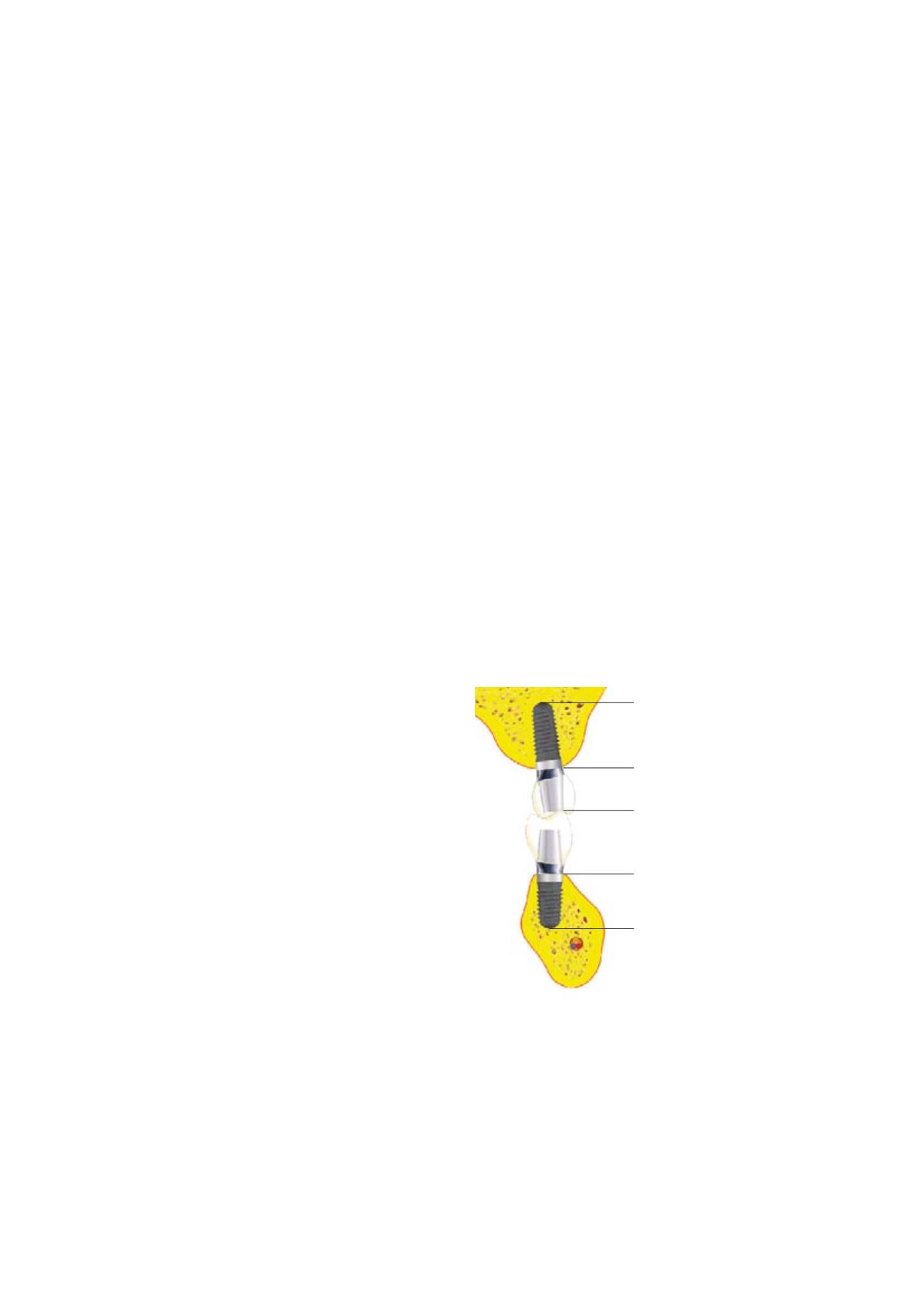

14 | 15
CAMLOG
®
Implant Position Planning
INTRODUCTION
It is known from general physiology that both non-loading and underload-
ing of the bone induce degradation just as much as overloading (inactivity
atrophy, pressure atrophy). The area between these two extremes is called
normal loading. This consists in a balance between growth and degrada-
tion. Working with bridge restorations in conventional prosthetics has led
to identification of consistently high rates of bone degradation in non-
loaded or underloaded teeth pillar (Misch/Frost 1990).
W. Schulte recognized this in 1982 and proposed early (= immediate, if pos-
sible) implantation to offset atrophy of the periodontal structures, which
commences immediately after tooth loss. The implant supports the alveo-
lar bone and prevents the bony areas from being either overloaded or sub-
jected to inactivity atrophy (stress-shielding).
LEVERAGE RELATIONS AT THE IMPLANT
Loading of the implant-bone interface is a result of the leverage relation
generated by osseointegration-related resistance to the prosthesis load arm
(equivalent to the supracrestal implant length plus the height of the crown
above the implant shoulder). If IL is smaller than CL, then the load must be
reduced (e.g., through prosthetic splinting).
TREATMENT CONCEPTS
REFERENCES
Frost HM.
Bone „mass“ and the „mechanostat“:
a proposal. Anat Rec
1987; 219:1–9
Misch CE.
Contemporary implant dentistry.
St Louis: Mosby Inc 1999
Ch22:317–318
Schulte W.
Das Tübinger Implantat.
Schweiz Mschr Zahnmed
1985; 95:872–874
IL
IL
CL
CL


















